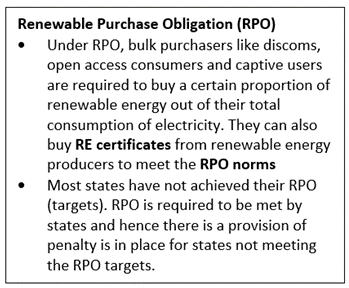Monday, 28th June 2021
LiDAR survey reports
In News
Union Environment Minister released LiDAR-based reports mapping out the water requirement within forest areas in 10 states.
About the News
- Areas Surveyed: The LiDAR (light detection and ranging) technology was used to create 3-D images of the project areas to recommend soil and water conservation structures. The surveys were carried out at forest areas in Assam, Bihar, Chhatisgarh, Goa, Jharkhand, Madhya Pradesh, Maharashtra, Manipur, Nagaland, and Tripura.
- The sites that have been selected are ones which are slightly degraded, and the states have identified these so that water and fodder augmentation projects, as well as afforestation, can be carried out in the identified site.
- The organization: The project which was awarded to WAPCOS, a PSU under the aegis of Ministry of Jal Shakti, is a first of its kind and a unique experiment using LiDAR technology.
- Objectives of the Survey: The LiDAR enabled survey will help augment water and fodder in jungles areas thereby reducing human-animal conflict and in groundwater recharge.
- Funding: CAMPA funds are being utilized towards implementation of these projects in accordance with the ‘Ridge to Valley’ approach of watershed management.

What is LiDAR Technology?
- LiDAR is an acronym of Light Detection and Ranging. It is also known as laser scanning or 3D scanning. LiDAR is a remote sensing method that uses light in the form of a pulsed laser to measure ranges (variable distances) to the Earth.
- Components: There are three primary components of a LiDAR instrument - the scanner, laser and GPS receiver.
- Types of LiDAR Systems: Airborne LiDAR, which is installed on a helicopter or drone for collecting data and Terrestrial LiDAR, which are installed on moving vehicles or tripods on the earth surface for collecting accurate data points.
- Working: LiDAR follows a simple principle — throw laser light at an object on the earth surface and calculate the time it takes to return to the LiDAR source. The formula for the precise distance of the object is: The distance of the object= (Speed of Light x Time of Flight)/ 2
- Applications:
- Oceanography: When the authorities want to know the exact depth of the ocean’s surface to locate any object in the case of a maritime accident or for research purposes, they use LiDAR technology to accomplish their mission. Other than locating objects, LiDAR is also used for calculating phytoplankton fluorescence and biomass in the ocean surface, which otherwise is very challenging.
- Digital Elevation or Terrain Model: Terrain elevations play a crucial role during the construction of roads, large buildings and bridges. LiDAR technology has x, y and z coordinates, which makes it incredibly easy to produce the 3D representation of elevations to ensure that concerned parties can draw necessary conclusions more easily..
- Agriculture & Archaeology: Typical applications of LiDAR technology in the agriculture sector include analysis of yield rates, crop scouting and seed dispersions. Besides this, it is also used for campaign planning, mapping under the forest canopy, and more.
- Space Travel: LiDAR has been identified by NASA as key in enabling them to land lunar vehicles safely.
UNODC World Drug Report 2021
In News
The annual World Drug Report 2021 was released by the United Nations Office on Drugs and Crime (UNODC), which also provides an overview of global drug markets, as well as their impact on people’s health and livelihoods, taking into account the possible effects of the COVID-19 pandemic.
Key Findings
- Drug Use Rising, but Science-Based Treatment More Available
- Around 275 million people used drugs worldwide in 2020, while over 36 million people suffered from drug use disorders.
- Globally, over 11 million people are estimated to inject drugs, half of whom are living with Hepatitis C. Opioids continue to account for the largest burden of disease attributed to drug use.
- The two pharmaceutical opioids most commonly used to treat people with opioid use disorders, methadone and buprenorphine, have become increasingly accessible over the past two decades. This indicating that science-based pharmacological treatment is more available now than in the past.
- The Dark Web
- Drug markets on the dark web only emerged a decade ago and major drug markets on the dark web are now worth some $315 million annually. Although this is just a fraction of overall drug sales, the trend is upwards with a fourfold increase between 2011 to mid-2017 and mid-2017 to 2020.
- The Drug Market Rebounds and Shifts
- Drug traffickers have quickly recovered from initial setbacks caused by lockdown restrictions and are operating at pre-pandemic levels once again, driven in part by a rise in the use of technology and cryptocurrency payments, operating outside the regular financial system.
- Contactless drug transactions, such as through the mail, are also on the rise, a trend possibly accelerated by the pandemic.
- Drug Risks, New Developments Spurred by Pandemic
- While the impact of COVID-19 on drug challenges is not yet fully known, the analysis suggests that the pandemic has brought increasing economic hardship that is likely to make illicit drug cultivation more appealing to fragile rural communities.
- The social impact of the pandemic – driving a rise in inequality, poverty, and mental health conditions particularly among already vulnerable populations – represent factors that could push more people into drug use.
- Positive trends
- A rise in the use of technology during the pandemic has also triggered innovation in drug prevention and treatment services, through more flexible models of service delivery such as telemedicine, enabling healthcare professionals to reach and treat more patients.
- The number of new psychoactive substances (NPS) emerging on the global market fell from 163 in 2013, to 71 in 2019. These findings suggest national and international control systems have succeeded in limiting the spread of NPS in high income countries, where the trend first emerged a decade ago.
Biotech-Kisan extended to North-East
In News
Central govt launched a new programme to boost agricultural productivity in North-East India
About the News
- Special Call: The Department of Biotechnology (DBT) has issued a Special Call for the North-East Region as a part of its Mission Programme “Biotech-Krishi Innovation Science Application Network (Biotech-KISAN)”, with the aim to understand the local problems of the NER farmers and provide scientific solutions to those problems.
- Objective: The Biotech-KISAN will be implemented in the North-East Region with the objective of linking available innovative agriculture technologies to the farm with the small and marginal farmers, especially women farmers of the region.
- Impediments: Four major impediments to higher production have been identified in the region
- Water: drought, flood, availability, and poor quality are major issues.
- Soil: poor soil health, lack of application of modern technologies in agriculture due to lack of knowledge and awareness, abiotic and biotic stress due to climate change.
- Seed: lack of availability of quality agricultural planting material at affordable cost to small and marginal farmers.
- Market: collapse of extension system for dissemination of new technologies among farmers, lack of use of available bio-resources at farm / village level for proper nutrient management and processing, packaging, and marketing.
- Significance: The present call specifically focuses on the North-East Region as it is predominantly agrarian with 70% of its workforce engaged in agriculture and allied sector for livelihood. The region produces merely 5 percent of the country‘s food grain and continues to be a net importer of food grains even for its domestic consumption. The NE region has untapped potential to enhance the income of the farming population by promoting of location-specific crops, horticultural and plantation crops, fisheries, and livestock production.
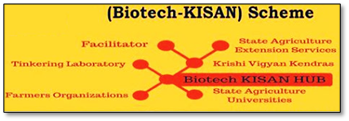
About the Biotech- KISAN scheme
- It is a Department of Biotechnology, Ministry of Science and Technology initiative that empowers farmers, especially women farmers.
- It is a scientist-farmer partnership scheme launched in 2017 for agriculture innovation with an objective to connect science laboratories with the farmers to find out innovative solutions and technologies to be applied at the farm level.
- It is a Pan-India program, following a hub-and spoke model and stimulates entrepreneurship and innovation in farmers.
- Under this scheme, so far 146 Biotech-KISAN Hubs have been established covering all 15 agro-climatic zones and 110 Aspirational Districts in the country. The scheme has benefitted over two lakh farmers so far by increasing their agriculture output and income.
Monetary and Fiscal Policy in times of Crisis
In News
The IMF’s recent global assessment shows the faster post-covid recoveries in economies are attributable to combination of quick, substantial fiscal and monetary responses.
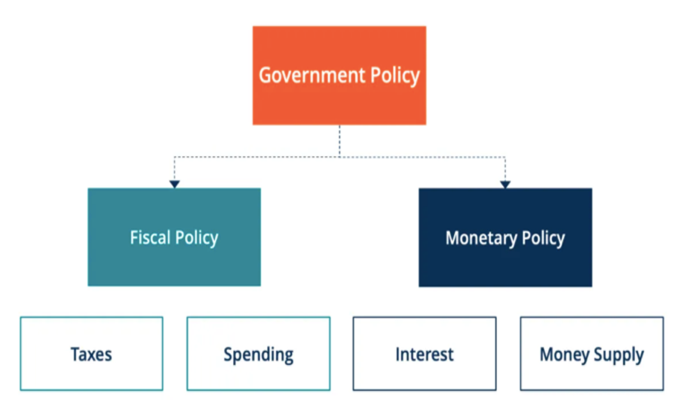
What is Monetary and Fiscal Policy?
- Monetary Policy: Monetary policy is the process by which a central bank (Reserve Bank of India or RBI) manages money supply in the economy. The objectives of monetary policy include ensuring inflation targeting and price stability, full employment and stable economic growth.
- Instruments for Monetary policy: Repo rate, Reverse Repo rate, Liquidity Adjustment Facility (LAF), Marginal Standing Facility (MSF), CRR, SLR, Open Market Operations (OMOs) and Market Stabilisation Scheme (MSS).
- Fiscal Policy: Fiscal policy in India is the guiding force that helps the government decide the amount of money to be spend to support the economic activity, and the revenue to be earned from the system, to keep the wheels of the economy running smoothly. Through the fiscal policy, the government of a country controls the flow of tax revenues and public expenditure to navigate the economy.
- For instance, subsidies provided to the MSME sector as part of the Atmanirbhar Bharat Abhiyan to support them in times in Covid crisis.
The framework for monetary and fiscal policy interface in India stems from the provisions of the Reserve Bank of India Act, 1934. In terms of the Act, the Reserve Bank manages the public debt of the Central and the State Governments and also acts as a banker to them. The interface between these two policies, however, has been continuously evolving.
How do Monetary and Fiscal Policy interact?
- Factors that determine the dynamics of the Interaction:
- Suitability to Macro Objectives: Both the policies are aspects of shared overall macro-economic policy objectives. The first factor is whether the relevant fiscal-monetary policy mix is conducive to the macro objectives. The relevant policy mix relates to the level of fiscal deficit, the pattern of financing especially the extent of monetisation and the dependence on external savings.
- Policy Direction: Whether both the policies are acting to reach a common desirable goal. A credible monetary policy can help moderate interest rates provided the fiscal authority does not give rise to a different set of expectations.
- Cognisance of Timeframes: Due cognisance of the fact that monetary and fiscal policy adjustments operate in different timeframes determines the outcome of interaction. Monetary policy changes can be undertaken at any time, unlike fiscal policy changes most of which are generally associated with the Annual Budget.
- Mutual respect and reinforcement: Harmonious implementation of policies may require that one policy is not unduly burdening the other for too long. Mutual respect and reinforcement is the key for this kind of balance.
- Problems arising due to lack of Co-ordination
- Each is worse off: Monetary policy affects demand more, while fiscal policy affects supply-side costs. Since each is more effective in achieving the other’s objective, total independence leads to a non-cooperative strategic interaction. As players follow their own interest, each is worse off in the outcome of higher inflation and lower growth. Efficacy of monetary policy’s accommodative stance is limited due to inadequate fiscal stimulus to economic agents.
- Uneven distribution of Load: Monetary policy has been the prime mover in the covid-19 crisis. While the RBI responded proactively and aggressively to ease liquidity concerns, the government’s fiscal stimulus efforts has only been at 2-2.5% of GDP, which is at the lower end amongst emerging markets.
Given the problems due to lack of coordination, it becomes important that Monetary and Fiscal policy respond to the current crisis in synergy.
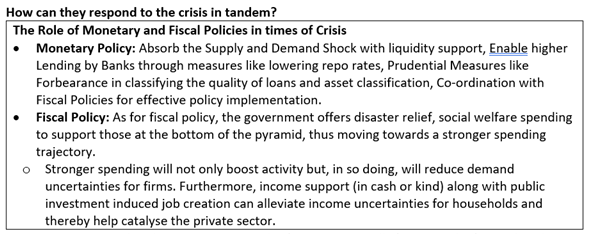
- Increase Demand in the economy: Growth of an economy calls for a straight-forward push to demand. To kick-start this, the government’s capital expenditure will play a pivotal role. On its part, monetary policy must do a “holding job” on rates and complement the fiscal by ensuring financial conditions that don’t unduly tighten on account of fiscal recalibration or because of increasing normalisation pressures around the world.
- Balancing Growth and Inflation: As growth continues to rebound and gets increasing support from fiscal policy, inflation rise is highly probable. As pent-up demand leads to an economic rebound, the RBI can gradually draw some of the excess liquidity out of the system.
- Stabilizing Liquidity Equation: Adequate liquidity injections and monetary policy regulatory easing eliminates or reduces the dangers of high inflation and facilitates creative policy measures to ensure the alignment of demand with supply, and restructuring exercises with proper risk-pricing to minimize losses and aid recovery.
Conclusion
The output shocks due to Covid-19 have changed preferences of central bankers worldwide to give more weight to growth. This explains why there is now much more coordination of monetary and fiscal policies. This coordinated equilibrium strategy can work in the pandemic. It avoids the dangers of high inflation and financial instability for a temporary output spike from a disequilibrium strategy of massive monetary-fiscal stimulus.
Question: Discuss the need of synergy between the monetary and fiscal policy. Explain their relevance during the times of economic crisis.
Primary Sources:
https://www.rbi.org.in/Scripts/PublicationsView.aspx?id=13841
https://rbidocs.rbi.org.in/rdocs/Bulletin/PDFs/17185.pdf
Secondary Sources: https://www.financialexpress.com/opinion/for-a-monetary-fiscal-tango/2203796/
https://www.g20-insights.org/policy_briefs/monetary-policies-strategies-and-the-covid-19-crisis/
https://blogs.imf.org/2020/04/01/economic-policies-for-the-covid-19-war/
This Day in History - PV Narsimha Rao
Today is the former Prime Minister PV Narasimha Rao's 100 birth anniversary, who served as the prime minister of India between June 1991 and May 1996. He was the ninth Prime Minister of India. Rao was a polyglot and a distinguished man of letters, who showed a keen interest in encouraging mother tongue as the medium of education. His government is remembered for major economic transformations. With his mandate, then Finance Minister Dr Manmohan Singh embarked on the historic economic transition. During his tenure as the industry minister, PV Narasimha undertook several key measures like dismantling the License Raj.
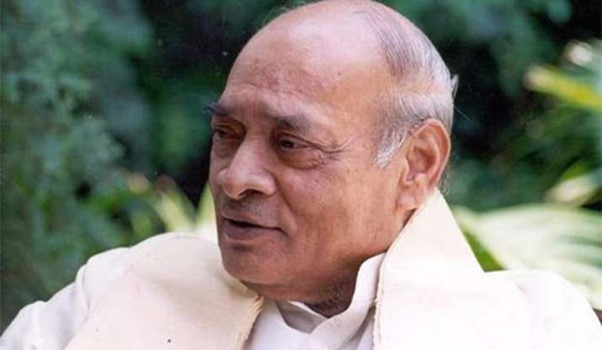
Image of the Day -International Space Station
NASA shared a captivating image of the International Space Station (ISS) transiting the Sun when two astronauts were out on a spacewalk. The ISS is seen in silhouette, like a very small object, against the yellow-orange background of the unbelievably large Sun. NASA captured the ISS at seven different points of time and created a composite image. The ISS was moving at a speed of roughly five miles (eight km) per second about 410 kilometres above Earth. The term “transit” is used to describe the event when an object crosses in front of another in space. At the time of this transit, two astronauts were working to install a new roll-out solar array on the ISS. The spacewalk lasted for six hours and 45 minutes.
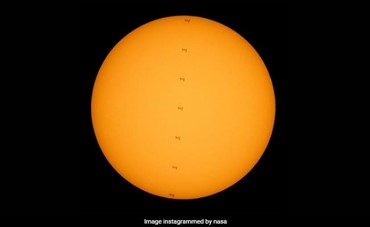
Ambergris
- Context: The Mumbai Police has arrested five people and seized nearly 9 kg of Ambergris.
- Ambergris, French for grey amber, is also called as whale vomit. It is the hardened whale dung or ejected intestinal slurry that forms after a complex process after sperm whale eats squid’s beak.
- It floats on water as solid waxy substance and later settles at the coast.
- It finds application in perfume markets, medicines, and spice.
- This excretion is so valuable (1 kg is worth Rs 1 crore in the international market) that it is referred to as floating gold. For the same reason, whales are targeted, and ambergris is smuggled to find valuable customers.
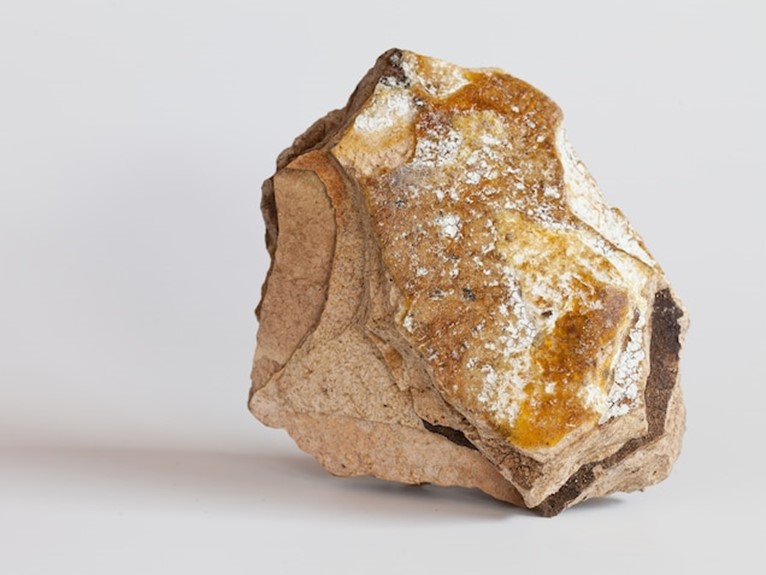
Primary source: https://indianexpress.com/article/explained/what-is-ambergris-whale-vomit-value-smuggling-7375391/
Picture source: https://www.nationalgeographic.com/animals/article/120830-ambergris-charlie-naysmith-whale-vomit-science
Itat e- Dwar
- Context: launch of Income Tax Appellate Tribunal ‘itat e-dwar’.
- It is an e-filing portal of Income Tax Appellate Tribunal (ITAT).
- The portal would enable the parties to file their appeals, applications, documents, etc. electronically.
- ‘Itat e-dwar’ will enhance the accessibility, accountability and transparency in the day to day working of the ITAT. It would result in economization of the use of paper, savings in costs and quicker disposal of cases.

Primary source: https://pib.gov.in/PressReleasePage.aspx?PRID=1730394
Picture source: https://www.livemint.com/money/personal-finance/it-department-to-launch-new-e-filing-portal-for-taxpayers-on-june-7-11621494383474.html
Sant Kabir Das
- Context: birth anniversary of Sant Kabir Das
- Poet, saint and social reformer, Kabir Das was born in Kashi (Varanasi) in mid-15th century.
- Sant Kabir Das was best known for his couplets, 'Kabir Ke Dohe' and his legacy through ‘Panth of Kabir’.
- He was on a spiritual journey to seek the Truth and to satiate his spiritual quest, he becamethe disciple of Ramananda.
- In his poems, Kabir calls himself a julaha and kori that mean weaver, belonging to a lower caste.
- He wrote most of his works in colloquial language which was easy to comprehend. Kabir Das' writings had a great influence on the Bhakti movement.
- Major part of his work was collected by the fifth Sikh guru-Guru Arjan Dev.
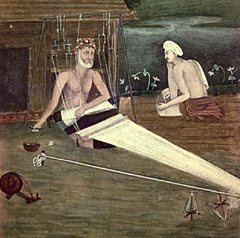
Primary source: https://www.hindustantimes.com/india-news/kabir-das-jayanti-2021-know-its-significance-date-and-time-101624499498038.html
https://indianculture.gov.in/stories/life-sant-kabir-das
Picture source: https://indianculture.gov.in/stories/life-sant-kabir-das
INS Vikrant: First Indigenous Aircraft Carrier
- Context: review of the ongoing work on the Indigenous Aircraft Carrier (IAC), INS Vikrant.
- The IAC built by the Cochin Shipyard, is an example of Atmanirbhar Bharat and will be commissioned in 2022.
- It is expected to havea top speed of 30 knots (approximately 55 kmph), is propelled by four gas turbines. Its endurance is 7,500 nautical miles at 18 knots (32 kmph) speed.
- The vessel will have an air component of 30 aircraft, comprising MiG-29K fighter jets, Kamov-31 airborne early warning helicopters, MH-60R multi-role helicopter and the indigenous Advanced Light Helicopters. The shipborne weapons include Barak LR SAM and AK-630, while it has MFSTAR and RAN-40L 3D radars as sensors.
- With an overall length of 263 metre and a breadth of 63 metre, it is the largest vessel made in India. It has a pair of runways and a short take off but arrested recovery system to control aircraft operations.

Primary source: https://www.thehindu.com/news/national/carrier-will-be-the-navys-most-potent-platform/article34981900.ece
Picture source: https://www.newindianexpress.com/nation/2020/dec/03/ins-vikrant-will-be-commissioned-by-2022-says-vice-admiral-chawla-2231093.html
Improving India’s human capital by enhancing investment in the early years of children’s development
Essence: According to various research and economists, investment at birth until five years brings higher returns and greater social gains. It is one of the most cost efficient and powerful strategies to achieve fair and sustainable development. In India, over 43% of children under the age of five are at risk of not fulfilling their full developmental potential due to poor nutrition, poverty, and lack of early stimulation. The risk has increased due to pandemic, reversing progress towards meeting the goal of ending hunger. India’s spending on healthcare is the lowest amongst the BRICS and other developing nations leading to serious supply-side deficits of health facilities and professionals. According to reports, India has made progress in improving literacy over the years but has the highest unemployed people. But further challenge have come due to pandemic and deepening digital education divide. The GoI has been announcing various schemes to strengthen human capital but it needs to strengthen delivery mechanisms to ensure transparency and accountability.
Why to read this article?
- To understand why it is important to enhance investment in the early year’s of children’s development.
- To get an overview of India’s human capital investment, challenges and possible steps India should take to tackle the same.
Big Tech and the State: The necessity of regulating tech giants
Essence: Big Tech or ‘significant social media intermediaries’ have become highly profitable ad businesses that have grown amid non-existent privacy and weak intermediary liability laws. This perverse power is, perhaps, the single biggest challenge that nations and peoples will have to grapple with. Accountable Tech must be India’s leitmotif in 2023 as it presides over the G-20, and a robust digital republic its sovereign mission as its turns 75 next year. This article highlights the need for sensible politics, sophisticated policies, and a return to first principles to regulate tech giants,
Why you should read this article?
- Identify the need for regulation of Big Tech such as concentration of power, self-regulation making Big Tech as the arbiter of permissible speech and digital connectivity described as a ‘utility’ or public good.
- Understand the Regulation of Big Tech across democratic setups such as Australia, Canada, European Union, Poland, etc.
- Know about the status of regulation of Big Tech in India and the need for the Privacy and Data Protection (PDP) Bill to be enacted as law.
Article Link: https://www.orfonline.org/expert-speak/big-tech-and-the-state-the-necessity-of-regulating-tech-giants/
WHY FARM: TRINDAD & TOBAGO
What is WHY FARM:
- WHYFARM stands for We Help You(th) Farm
- It aims to inspire and empower young people and women to be change-makers through agriculture
- Majorly the focus has been on agricultural educational via entertainment
Best Initiatives taken to inspire youth:
- Recognition and Reward Mechanism: Concepts like Food and Nutrition security superheroes are recognised to reward the initiatives taken
- Education: Super-heroes engage teaching children the importance good food and how they can contribute to nutrition security.
- Innovative engagements: Engagement with the youth via a form of Visual and Performing arts such as animations, songs, poetry, and drama shared through social media and comic books to creatively inspire young people to engage in agriculture
Benefits of this initiative:
- Innovation in agriculture: Bringing youth in agriculture can increase the growth of agriculture as youth can bring innovative practise in agriculture
- Boost Growth in agriculture due to greater innovation
- Increase in employment as agriculture would be seen as productive sector
Things to ponder:
- Are youth in India inspired to take up agriculture? If not, then why?
- How can youth be inspired to take agricultural practices?
- Think of some government initiatives which aim to make agricultural a productive sector and which aims to increase youth attraction towards agriculture.
Source: https://www.unccd.int/actionsland-life-programme/land-life-award-2021-healthy-land-healthy-lives
Share the article
Get Latest Updates on Offers, Event dates, and free Mentorship sessions.

Get in touch with our Expert Academic Counsellors 👋
FAQs
UPSC Daily Current Affairs focuses on learning current events on a daily basis. An aspirant needs to study regular and updated information about current events, news, and relevant topics that are important for UPSC aspirants. It covers national and international affairs, government policies, socio-economic issues, science and technology advancements, and more.
UPSC Daily Current Affairs provides aspirants with a concise and comprehensive overview of the latest happenings and developments across various fields. It helps aspirants stay updated with current affairs and provides them with valuable insights and analysis, which are essential for answering questions in the UPSC examinations. It enhances their knowledge, analytical skills, and ability to connect current affairs with the UPSC syllabus.
UPSC Daily Current Affairs covers a wide range of topics, including politics, economics, science and technology, environment, social issues, governance, international relations, and more. It offers news summaries, in-depth analyses, editorials, opinion pieces, and relevant study materials. It also provides practice questions and quizzes to help aspirants test their understanding of current affairs.
Edukemy's UPSC Daily Current Affairs can be accessed through:
- UPSC Daily Current Affairs can be accessed through Current Affairs tab at the top of the Main Page of Edukemy.
- Edukemy Mobile app: The Daily Current Affairs can also be access through Edukemy Mobile App.
- Social media: Follow Edukemy’s official social media accounts or pages that provide UPSC Daily Current Affairs updates, including Facebook, Twitter, or Telegram channels.

